A 1MW solar farm can produce about 1,825MWh of electricity per year, which is enough to power 170 US homes.
The exact amount of energy a solar farm produces depends on many factors, such as the solar farm’s capacity, the amount of sunlight it receives, weather conditions, grid health, and many more.
In this article, we’ll go through all these factors and help you calculate how much energy a solar farm produces.
So, without further ado, let’s jump right into it.
Key Takeaways
- A 1MW solar farm produces about 1,825MWh of electricity per year, enough to power approximately 170 U.S. homes.
- The energy a solar farm generates is influenced by several factors, including solar capacity, sunlight exposure, weather conditions, and technological efficiency. Optimizing these factors is key to maximizing energy production.
- Solar farms are financially sustainable, generating significant revenue by selling electricity back to the grid. Their profitability varies based on the rates of local electricity bills and operational efficiencies.
What Are Solar Farms?
Imagine an expanse of land not filled with crops but with rows upon rows of gleaming solar panels.
This is the essence of a solar farm: a large-scale deployment of solar photovoltaic (PV) panels laid out across acres of land, designed to capture sunlight and convert it into electricity.
Unlike the smaller, rooftop solar setups you might see on residential homes, solar farms are powerhouses capable of generating enough electricity to supply thousands of homes, making a significant contribution to our renewable energy capabilities.
For more information, check our article on how solar farms work.
Understanding Solar Farms Key Terms
1. Megawatt (MW)
A megawatt is a unit of power, where one megawatt equals 1,000 kW or 1,000,000 watts.
Why is this number important? You might ask.
Because it helps us measure the solar farm’s capacity to produce electricity.
You see, solar panels are rated based on the amount of sunlight they can convert into electricity (efficiency).
To rate a solar panel’s wattage, we expose it to sunlight that’s assumed to be 1,000 watts per square meter (kW/m²) under Standard Test Conditions (STC), and then measure how much electricity it produces.
If it produced 300Wh of energy, then that’s a 300W solar panel.
So, what does that mean for solar Farms?
Well, when we say a 1MW solar farm, what we actually mean is that this system can produce a maximum of 1,000 kWh of electricity for every 1,000 W/m² of sunlight it receives.
2. Megawatt Hour (MWh)
A megawatt hour is a unit of energy. Each megawatt hour equals 1,000 kWh or 1,000,000 Wh.
This unit gives us a neat way to talk about the amount of electricity a solar farm can actually supply over time, not just its momentary production capacity.
It shows us not just the peak solar power a farm can produce (that’s the MW part) but how that power adds up over time to really supply our electricity needs.
So in short, while MW tells us about the “strength” or capacity of a solar farm, MWh tells us about its “stamina” or how much work it can do over time.
Together, these units help us grasp both the immediate and long-term benefits of investing in solar energy, illustrating not just how powerful these farms are but also how they contribute significantly to our ongoing energy needs.
3. Solar Irradiance (Peak Sun Hours)
Sun irradiance isn’t constant throughout the day. At one minute it can be 700 W/m² and at the other minute, it can be 500 W/m².
That’s why we use the term peak sun hours to estimate how much sunlight the panels receive, where one peak sun hour is an hour when the sun intensity averages 1,000 W/m².
It’s a critical factor in predicting the efficiency and output of a solar farm, as it directly influences the amount of electricity the solar farm can produce.
Generally, we build solar farms in areas that get an average of at least 4-5 peak sun hours per day.
4. Direct Current (DC) Power
Solar panels produce direct current, where the electric charge flows in one constant direction without reversing. It’s a straight, steady current, like what you get from a battery.
Now, DC solar power is a lot harder to transport over long distances without losing a significant amount of energy due to wire resistance among other factors.
So, solar farms use inverters to convert the direct current into a more suitable type of current for transmission.
5. Alternating Current (DC) Power
Inverters produce alternating current, where the electric charge changes direction periodically.
This means that the current flows in one direction, then reverses and flows in the opposite direction, doing this cycle repeatedly.
Now, AC is more efficient for transmitting power over long distances because you can increase or decrease the voltage with transformers, allowing it to travel long distances without significant power losses.
Also, most of the world’s power grid and household appliances use AC because it can be easily transformed to higher or lower voltages, making it more versatile for different uses.
Calculating How Much Energy Solar Farms Produce
To calculate how much energy a solar farm produces, all you have to do is to follow this simple formula:
Solar Farm Energy Output/Day (MWh) = Solar Farm Capacity (MW) x Peak Sun Hours (h)
So, for example, if a 1MW solar farm gets an average of 5 peak sun hours per day, then it can produce 5MWh per day or 1,825MWh per year (1,825,000kWh of electricity).
With an average household yearly consumption of 10,791 kWh, that’s enough energy to power around 170 homes.
Now, it’s important to mention that this is a simplified formula.
For an accurate calculation, we need to adjust the formula for real-world conditions such as weather, the tilt and orientation of the panels, panel degradation, heat losses, wire losses, and efficiency losses in converting DC to AC power.
These losses can make up to 24% of the total power production.
Factors Influencing Solar Farms Energy Production
1. Sunlight Availability
The most obvious yet crucial factor is the availability of sunlight.
Solar panels need sunlight to produce electricity, making geographical location a significant determinant of a solar farm’s output.
Regions closer to the equator typically receive more direct sunlight year-round, enhancing solar panel efficiency.
Conversely, areas with frequent cloud cover or higher latitudes may experience reduced solar generation, which is one of the major cons of solar farms.
2. Weather and Climate Conditions
Beyond just sunlight, other weather and climate conditions such as humidity, wind, and atmospheric dust can impact solar power plant performance.
For instance, high humidity can reduce the efficiency of solar panels, while wind can cool them down, potentially increasing their output.
Designing and operating community solar farms with consideration for local climate conditions can optimize their performance.
3. Tilt and Orientation
The angle at which you install solar panels and their orientation towards the sun significantly impact their energy production capabilities.
Panels positioned to maximize exposure to direct sunlight can capture more solar energy.
In the northern hemisphere, solar panels typically face south to receive the most sunlight throughout the day.
The optimal tilt angle varies based on latitude and can be adjusted seasonally to improve efficiency.
4. Temperature
Contrary to what one might expect, solar panels operate more efficiently at lower temperatures.
Excessive heat can reduce the electrical output of solar cells, meaning solar power plants in cooler, sunny environments may outperform those in hotter regions, even with similar sunlight exposure.
Managing panel temperature through proper ventilation and choosing materials with lower heat sensitivity can mitigate these effects.
5. Maintenance and Cleanliness
The condition of solar panels affects their performance.
Dust, debris, snow, and bird droppings can block sunlight from reaching the solar cells, reducing a panel’s energy output.
Regular solar panel cleaning and maintenance is essential to ensure the panels operate at peak efficiency.
Additionally, wear and tear over time can diminish a panel’s effectiveness, making ongoing care and occasional replacement of parts necessary.
6. System Design and Configuration
The way a solar farm is designed, including the layout of solar panels and the integration of components like inverters and storage systems, influences its overall efficiency.
A well-designed system maximizes energy capture and minimizes losses from shading or electrical inefficiencies.
Advanced technologies, such as tracking systems that adjust the panels’ angle to follow the sun, can significantly enhance energy production.
7. Inverter Efficiency
Inverters play a crucial role in converting DC (Direct Current) produced by solar panels into AC (Alternating Current) used by power grids and homes.
The efficiency of this conversion process directly affects the amount of usable electricity generated.
High-quality inverters with higher efficiency ratings ensure that more of the power produced by solar panels is converted into usable energy, minimizing losses during conversion.
8. Shading and Obstructions
Shading from trees, buildings, or even adjacent panels can significantly reduce the energy production of solar farms.
Even partial shading on a single panel can affect the output of connected panels in a string.
Strategic planning and regular monitoring are essential to minimize shading and maximize sunlight exposure on the panels throughout the day and year.
9. Aging of Solar Panels
Solar panels degrade over time, losing a small percentage of their efficiency each year.
This natural aging process means that a solar farm’s output will decrease gradually over its lifespan.
High-quality panels with lower degradation rates and warranties that guarantee performance over time can mitigate this impact, ensuring sustained energy production.
10. Grid Connection and Infrastructure
Limitations or inefficiencies in the grid connection can lead to bottlenecks, preventing the full amount of generated electricity from reaching end-users.
Upgrading grid infrastructure and employing smart grid technologies can enhance the integration of solar energy into the power system.
How Do Solar Farms Make Money?
Solar farms make money by selling the generated electricity to users or back to the grid using the Feed-in tariff.
With an average wholesale solar electricity price of $83 per MWh, a 1 MW solar farm can make about $150,000 per year.
For a deep-down dive, check our article on how much money solar farms make per acre.
It’s important to mention that how much money solar farms make depends on the kWh rate in your area.
For instance, a 1-megawatt solar farm in Hawaii can make 3 times more money than its sister in Texas.
FAQs
How Much Does It Cost To Build A Solar Farm?
A 1 MW (megawatt) solar farm can cost between $890,000 and $1.01 million to build.
This includes the cost of the solar system, the solar farm land lease rate, setting up the land for the farm, operation and maintenance cost, and many more.
How Much Energy Can 1 Acre Of Solar Panels Produce?
A 1-acre solar farm can host about 200-250 kW of solar panels.
Assuming an average of 5 peak sun hours per day, that’s 411 MWh of electricity per year.
How Big Are Solar Farms?
A 1 MW solar farm needs about 5-10 acres of land.
So if you want to build a huge 579 MW solar farm like the Solar Star farm in California, you’ll need at least 3,000 acres of land.
Last Words
And there you have it – a comprehensive journey through the world of solar farms, from the basics of their operation to the nitty-gritty of their energy-producing capabilities.
I really hope you enjoyed this article as much as I did writing it!
If you have any questions about solar farms, please let me know in the comments section below.
Join our solar microdosing newsletter and get bite-sized, easy-to-understand insights into the world of solar energy.
From how solar panels work to building your own DIY solar system, we’ve got you covered.


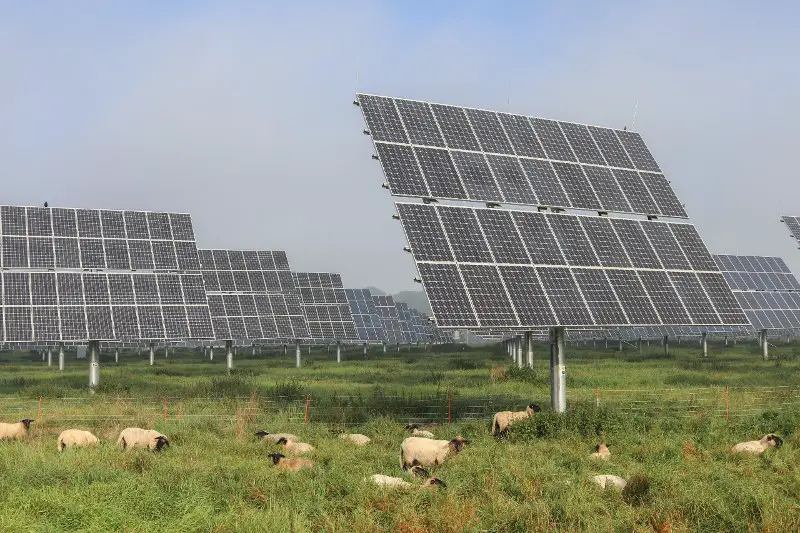
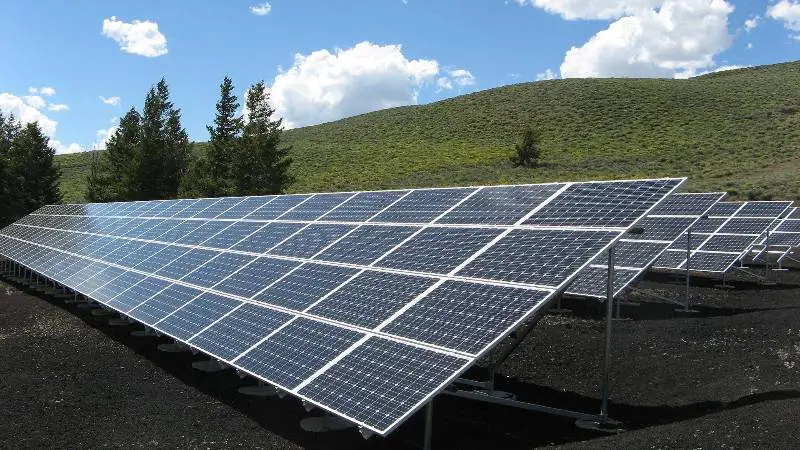
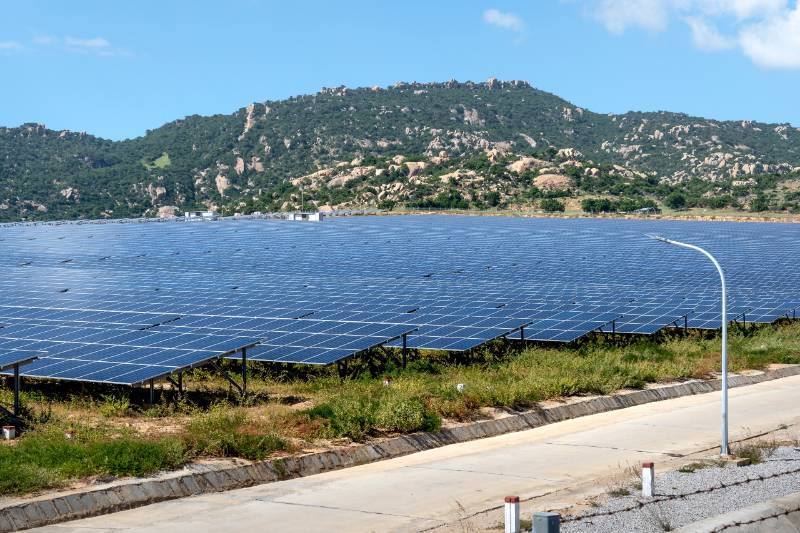
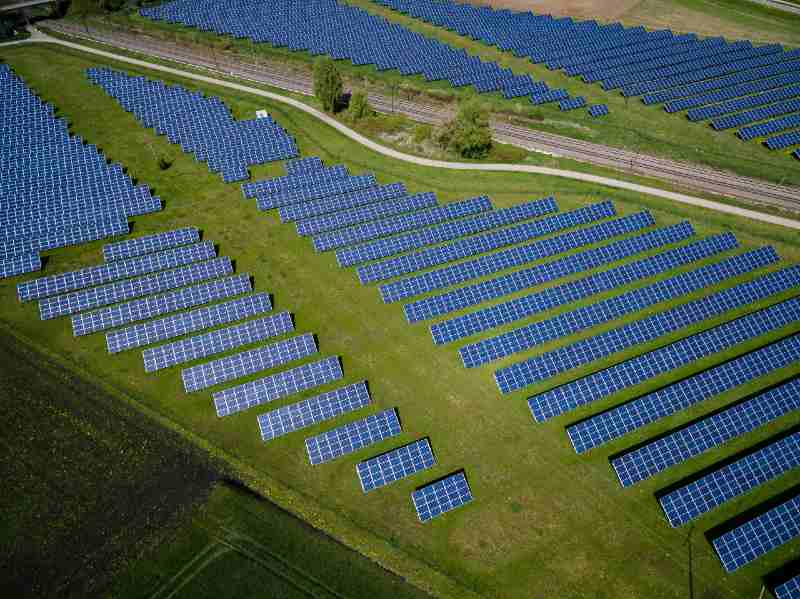
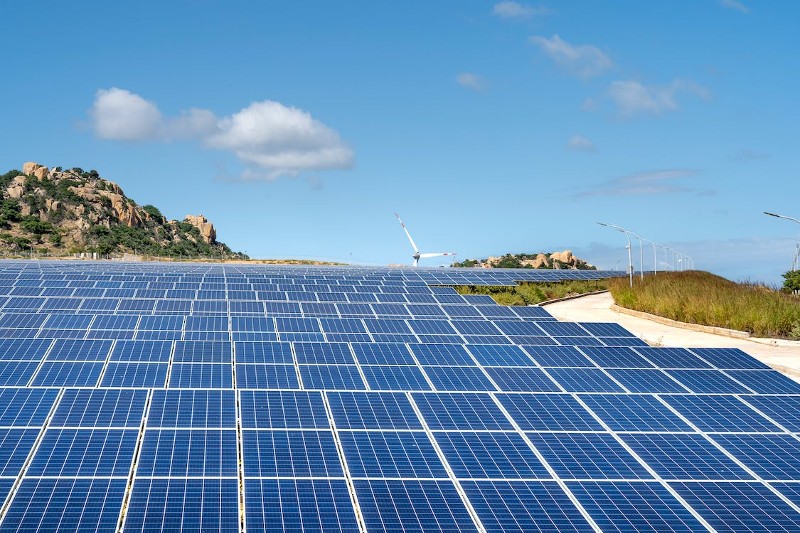
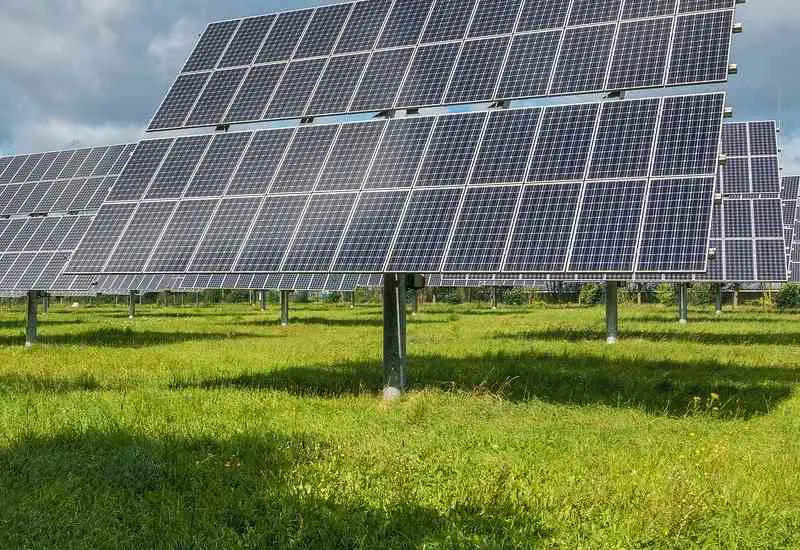

Hello, I am working on a different kind of solar farm at the moment that could be in full sunlight and produce,
up to 191,220,000 Volts, 47,850 amps, and 637,400,000 watts per day which would free up farmland for crops.
One of the good reasons for this solar farm is that unless you know where it is it’s not that visible to the eye. I am looking for help with this project in the way of technical and investors can you help, please
kind regards. Geoff Bailey.